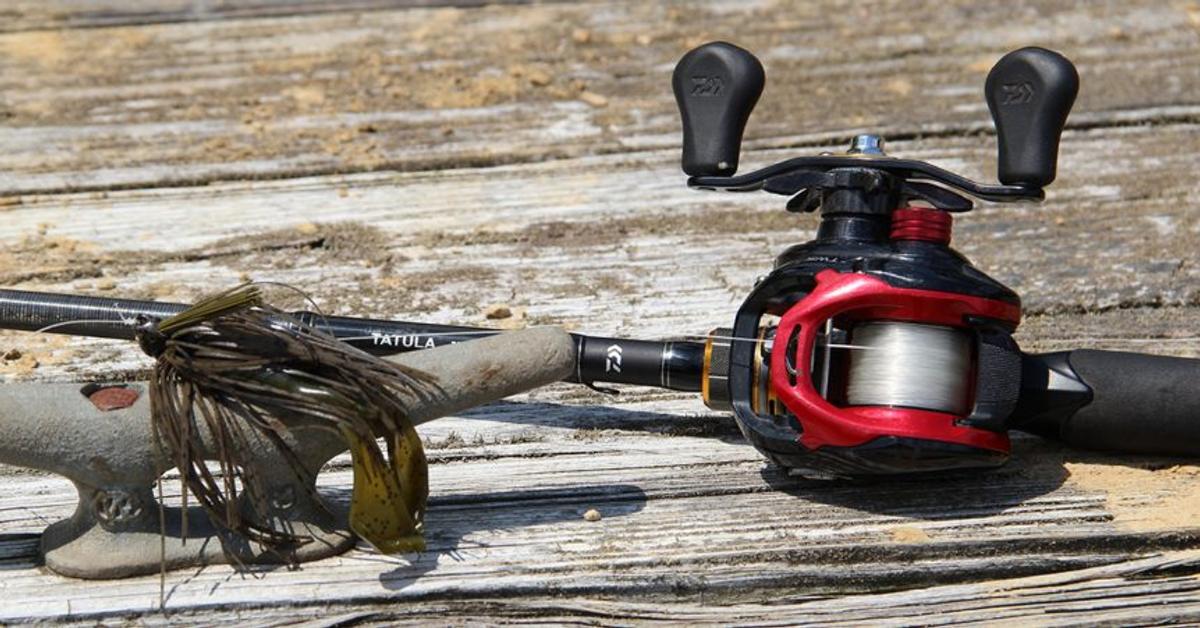How to Skip a Jig: Jig Skipping 101
Learning how to skip a jig is an excellent technique for getting a bait into hard to reach places. It is known that big bass like to sit in thick cover, and sometimes skipping is the only way to get a bait to them. Knowing how to skip will allow you to get your bait in front of the bass most anglers will never be able to reach. That being said, the reason most anglers don’t reach these spots is because skipping isn’t easy. We got some great tips from Intern Gavin to help make the process easier.
Starting Off Skipping A Jig
To start, you need to gear up correctly to make the most out of skipping a bait. Starting with your setup, Gavin tells us his go to is 20 lb fluorocarbon line, a high-speed reel, and a 7’ heavy action rod. Having a heavy action rod give the backbone for good hooksets and allows you to muscle a fish from cover. Pairing this with a high-speed reel, with at least a 7:1 gear ratio, is necessary to quickly pull those bass from the cover they were sitting in before they have a change to tangle you up around beams and logs. Adding 20 lb fluorocarbon to the setup leaves you with a deadly combo for skipping baits.
How To Skip A Jig: Getting Geared Up
After getting geared up, you need to pick a bait that will help you perform a good long skip. You will want a jig with a smooth head to it to glide easily over the water. Arkie jigs tend to be the best for this, although you can find jigs with heads designed specifically for skipping as well. You don’t want a bait that is too light or too heavy, so take Gavin’s advice and skip with a jig that is 3/8 to ½ an ounce. The trailer you add to your jig can also make a difference on your ability to skip it. You want a streamlined trailer that is free of excess appendages. These can get caught up and prevent a jig from skipping as effectively.
Setting Yourself Up To Skip A Jig
The next step is making the cast. Set your baitcaster for a slow fall so your bait isn’t moving too quickly where you will get a bird’s nest easily. You have two options for the cast itself. The most common would be to make a sidearm or swing cast. In this case you are casting the bait in a manner similar to how you would skip a rock. The other option would be to skip on a pitch. This is a harder option and requires a little more technique to execute. You will want to raise your rod tip as the bait goes across the water to keep it skipping longer. It is important with both methods to practice a lot. You will need to practice frequently to be able to consistently skip a jig. Also, keep in mind it doesn’t take a powerful cast to skip. Making a smooth cast will be much more effective.
How To Skip A Jig: Practice, Practice, Practice!
Next time you are out on the water, take some time learning and practicing these techniques to improve your casting ability. Don’t get discouraged if you get a backlash but keep practicing, it will be worth it in the end. It is best to practice skipping on open water, so you don’t have to worry about getting hung up. Once you have gotten the hang of it, don’t be afraid to cast into places with a lot to get caught up on, because that’s where you will find the fish. If you are able to start skipping consistently, you will see more and more bass in the boat.
Updated July 31st, 2019 at 10:04 AM CT


